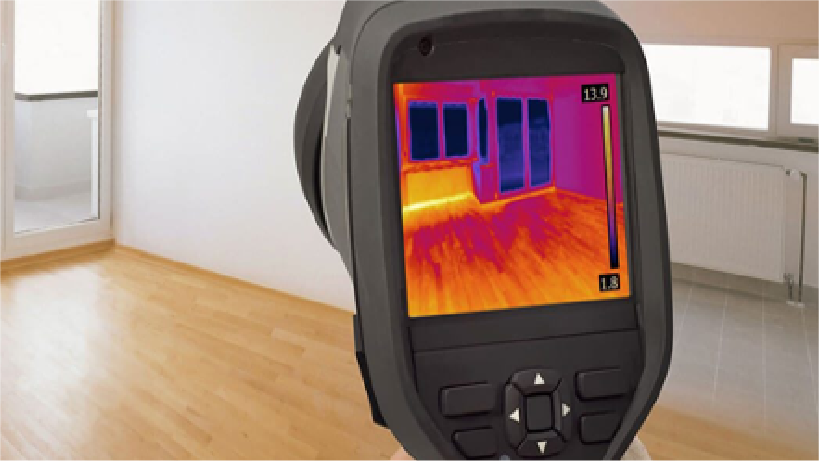Ever wish you could see through walls? A lot of home buyer’s do when they’re touring a potential new home for the first time. While it’s unlikely that you’ll get this superpower any time soon, there are technologies that can help. Enter: thermal imaging cameras.
What is Thermal Imaging?
Thermal imaging cameras (aka infrared sensors) detect heat the way a normal camera captures light. They work by sensing infrared energy (hot/cold) in an environment. The result creates a picture of the object or scene being viewed, that clearly shows temperature differentials. The images use different colors to represent gradients of temperature. While a thermal image may look a lot like a picture, it is actually a colored representation of the contrasting temperatures of the different surfaces the device was pointed at.
In layman’s terms: if you took a thermal image of two cups, one hot and one cold, you’d see the cups as different spots of color indicating how hot (or cold) they are. Similarly, if you placed your hand on a wall for a short while and then removed it, a thermal image sensor would show the outline of your handprint for as long as that part of the wall stayed warmer than the surrounding surface.
What Can a Thermal Image Inspection Discover?
Energy Loss
How’s the insulation? How about the seals around the doors and windows? A homes ability to stay warm in the winter and cool in the summer makes it more comfortable and more efficient. Thermal imaging can help discover any spots where the home may be losing heat (or cold) due to a lack of insulation or faulty seals.
Electrical Components Overheating
It’s normal for electric current to generate some amount of heat. Too much heat however can spell a problem and can indicate the potential for an electrical fire. Doing thermal imaging around a home’s electrical panel to look for any hot spots can be a useful addition to any home inspection.
Water Intrusion or Plumbing Leaks
Using thermal imaging, wet surfaces will appear as colder than surrounding dry surfaces. In this way thermal imaging can identify moisture, even if it’s behind dry surfaces. This is especially useful for stucco or faux-stone exteriors, finished basements and any other scenario where hidden moisture is a concern.
Quality Counts
If you were taking your blood pressure chances are you’d want to use a precise diagnostic tool. Similarly, when you’re having a thermal imaging inspection performed you’ll want it done with a high quality thermal imaging device. For our thermal imaging inspections we use FLIR Thermal Cameras. For stucco imaging in particular, we use the FLIR E6.
Want to learn more about other home-buying and inspection topics? Check out our blog for other informative posts on a variety of subjects!
By Chris Earley









